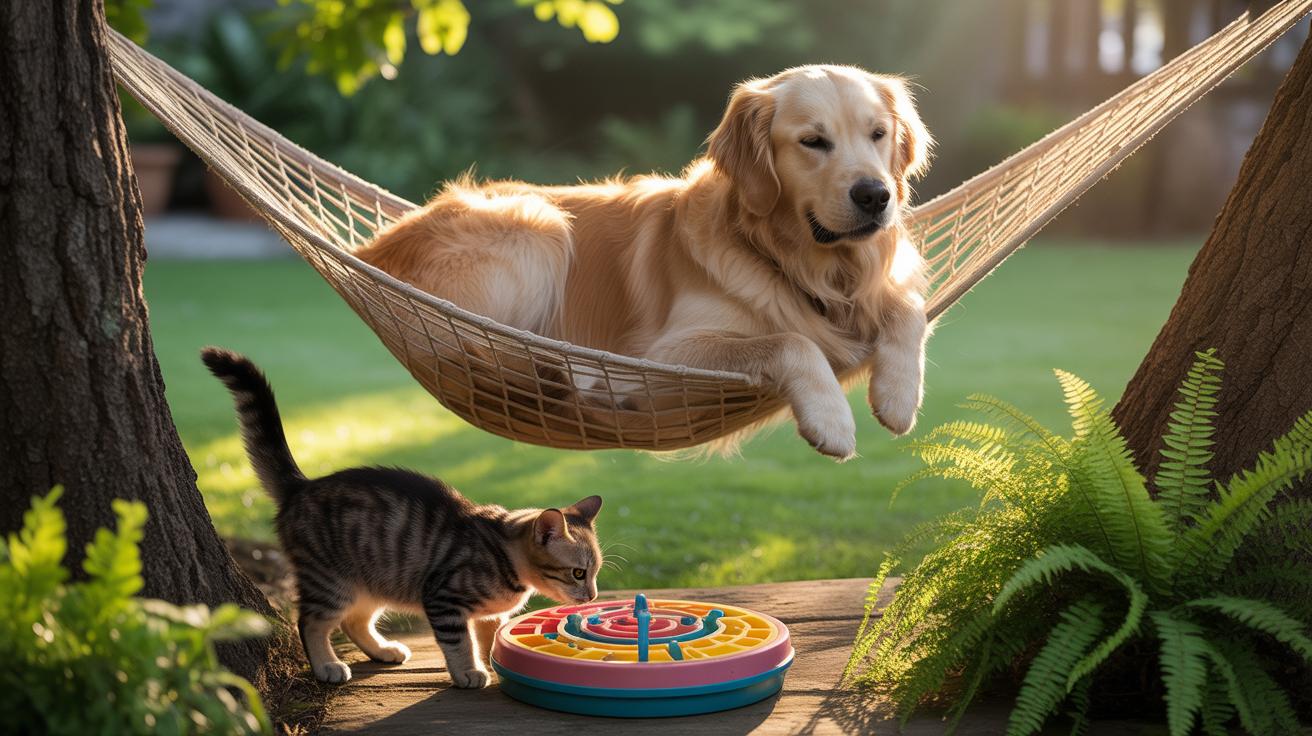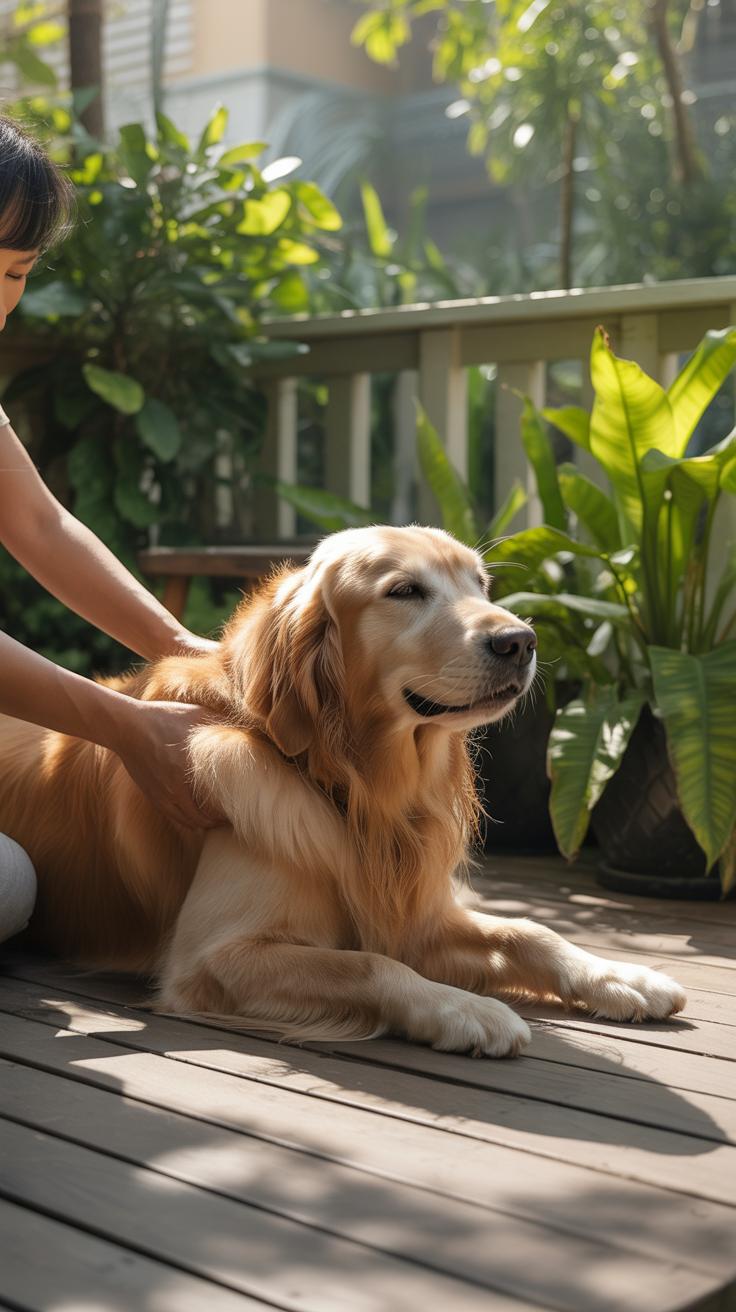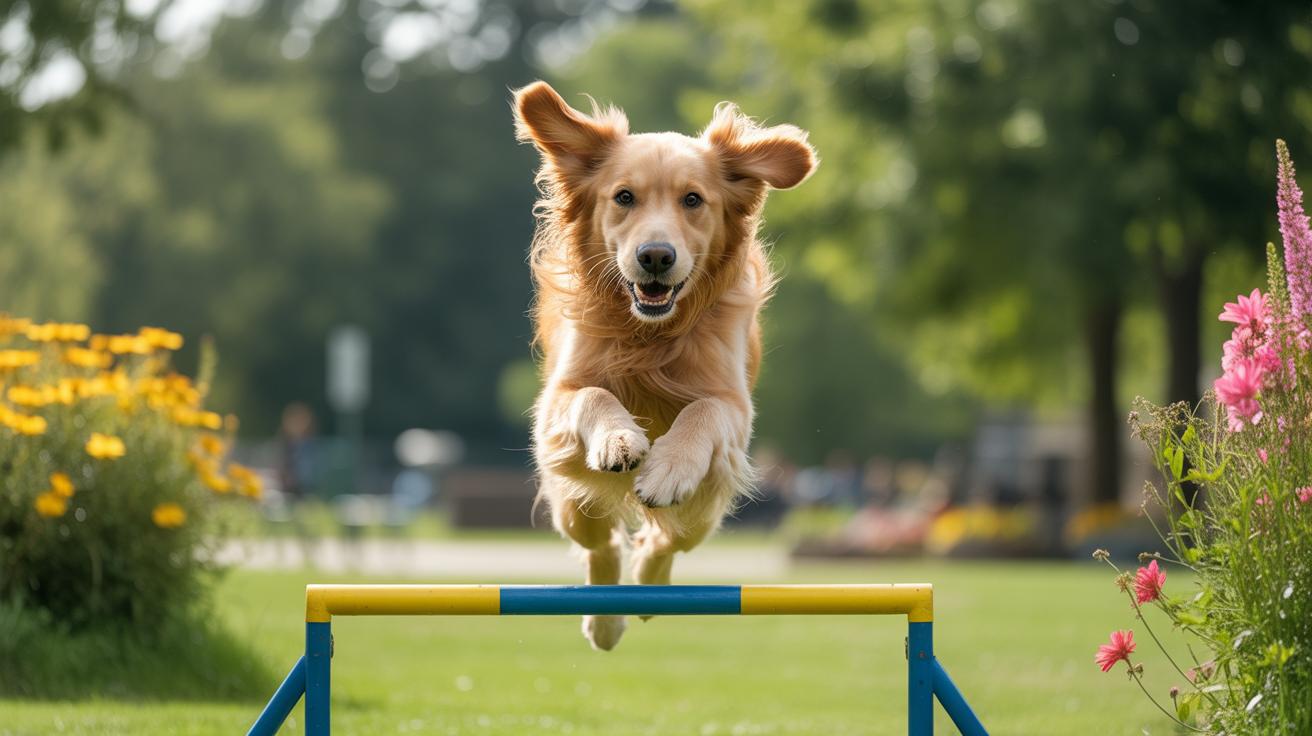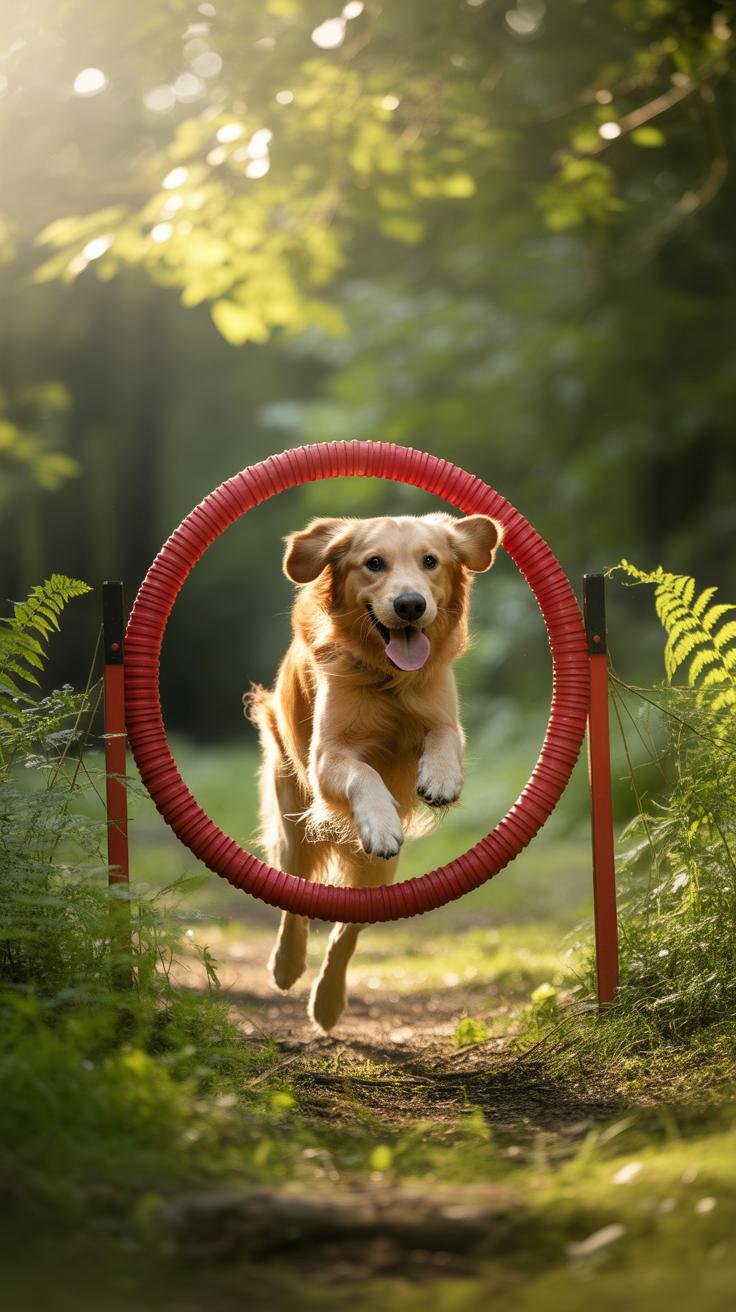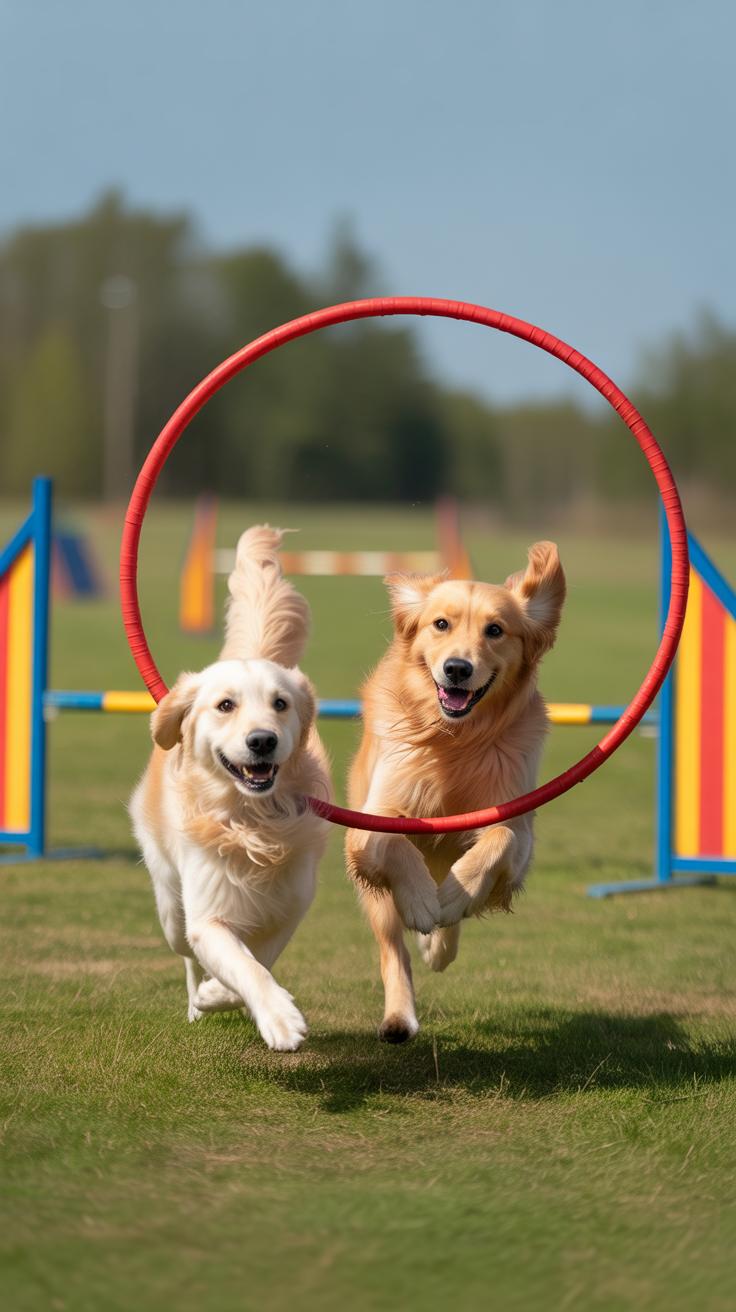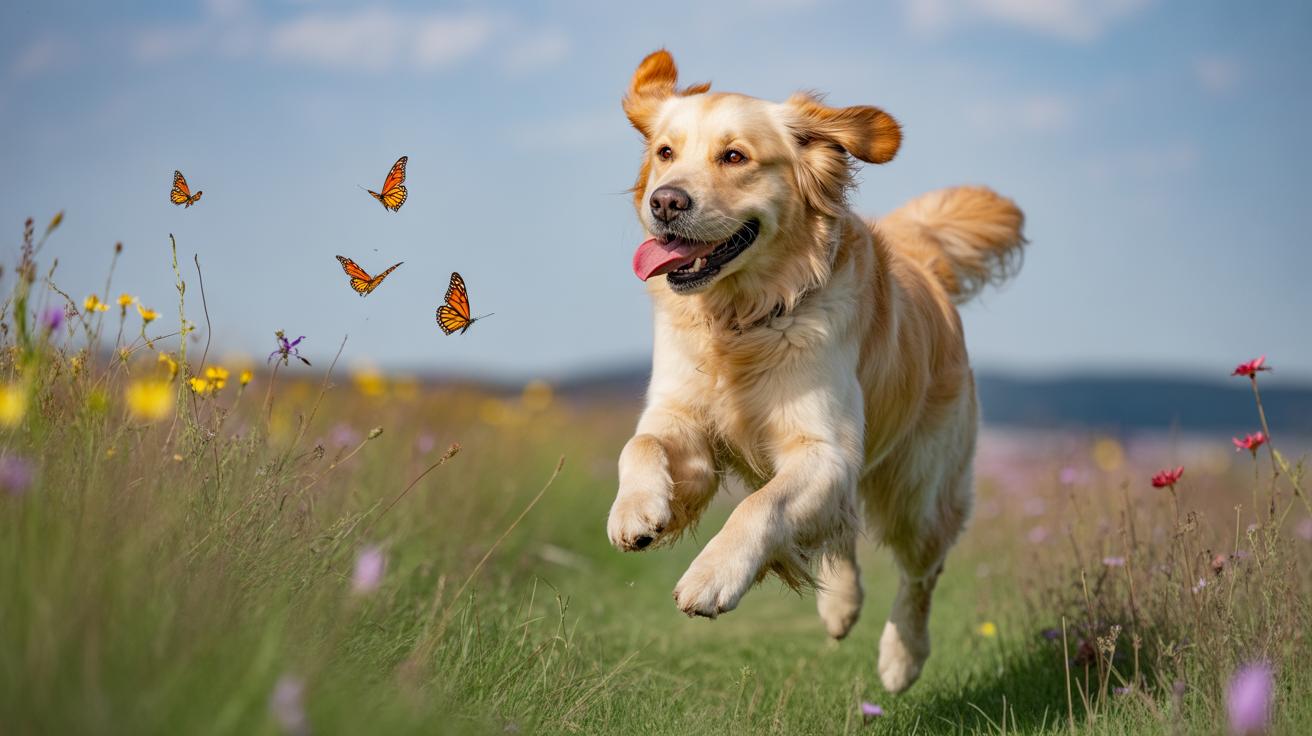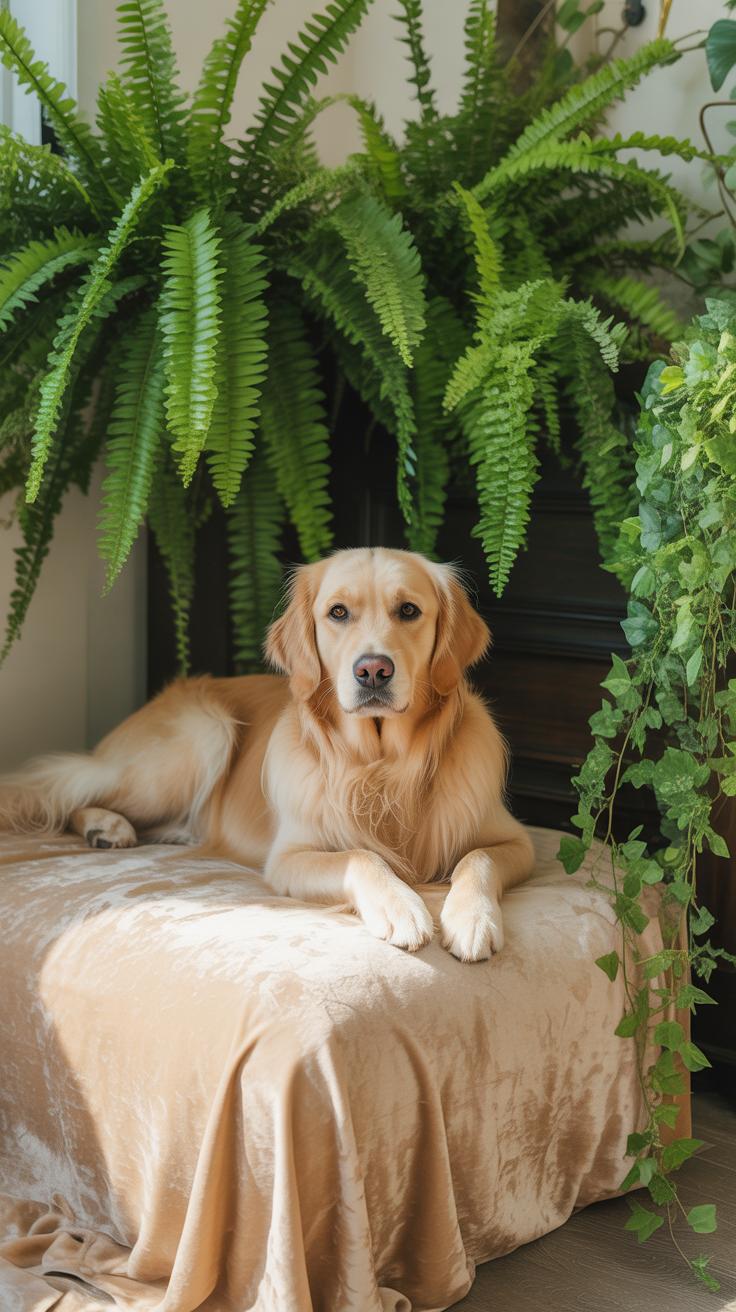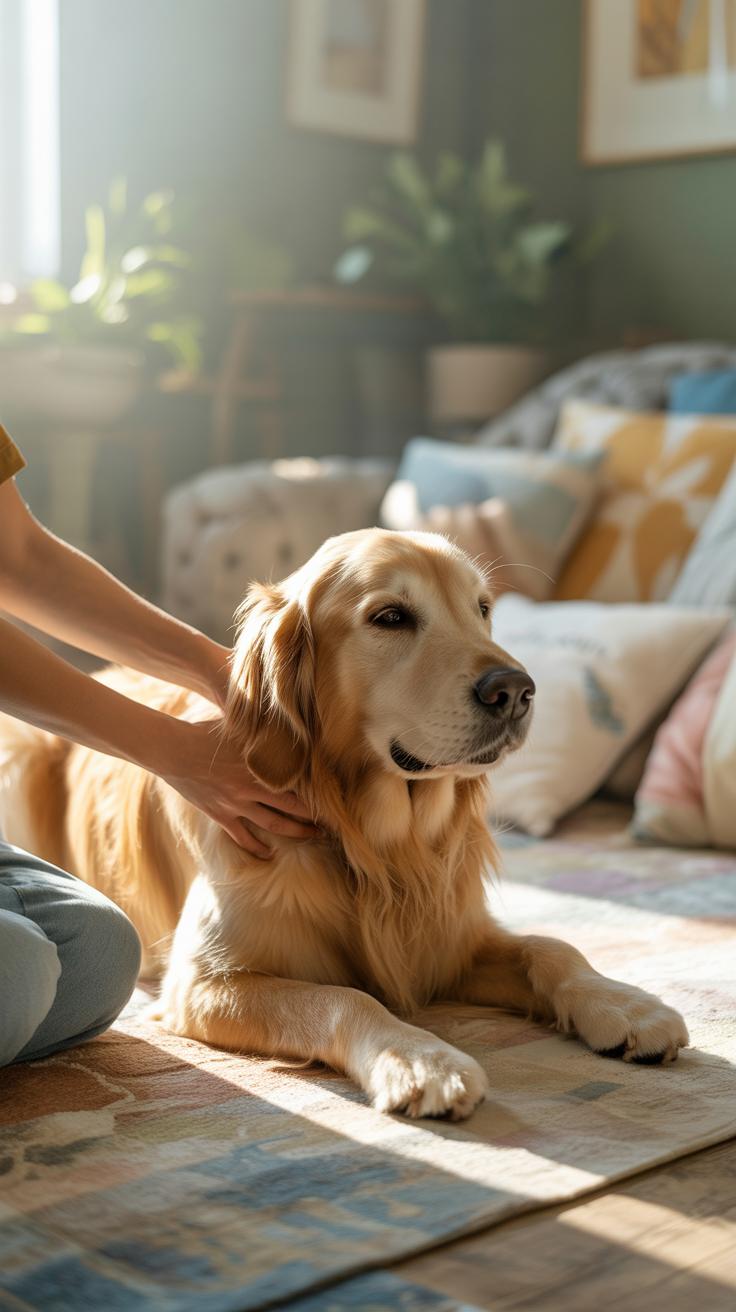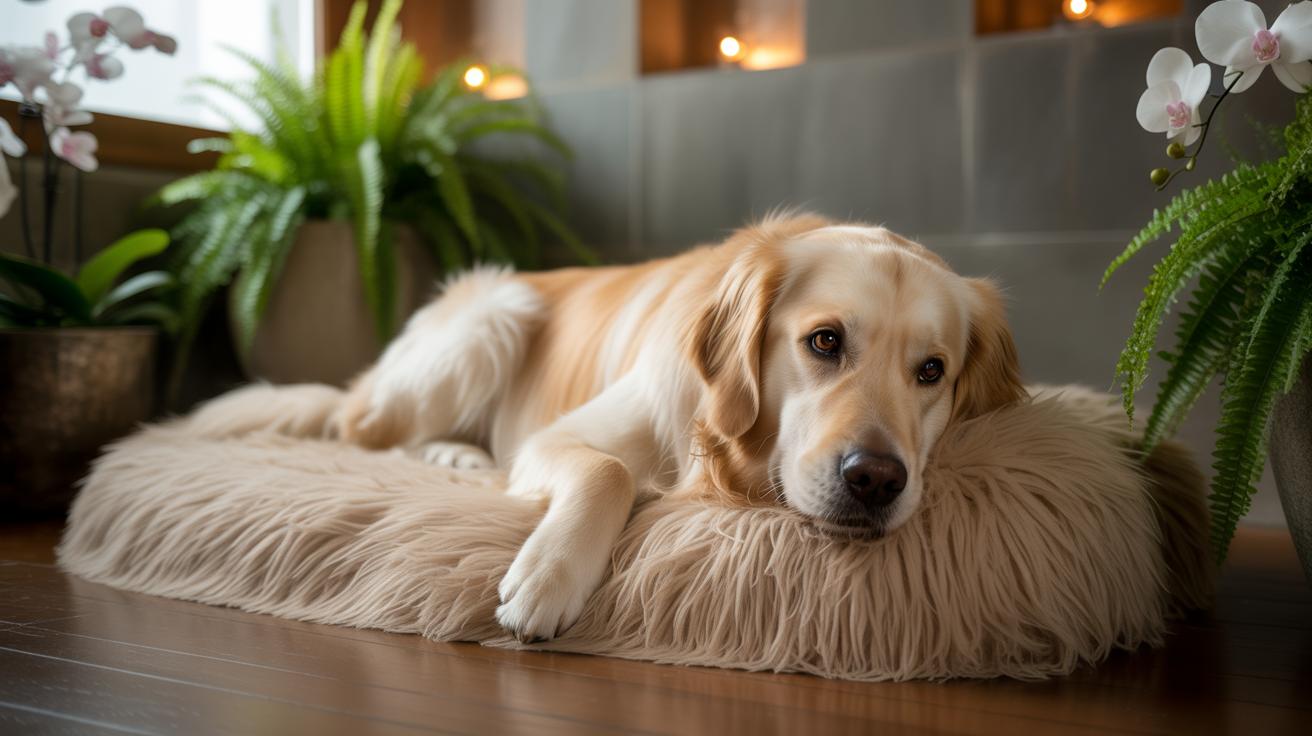Introduction
Stuff to do at pet wellness retreats offers your pets unique experiences designed for health and happiness. These retreats go beyond simple boarding or daycare by focusing on nurturing your pet’s mind, body, and spirit in a calm, supportive environment. Whether your pet is a dog, cat, or another animal, wellness retreats feature activities that cater to their well-being.
From calming therapies to physical exercises, these retreats aim to provide comprehensive care. Here, you will learn about the range of activities available that promote relaxation, proper exercise, mental stimulation, socialization, and health monitoring. Understanding these will help you choose the best retreat experience for your beloved pet.
Pet Wellness Retreats For Your Pets
Pet wellness retreats offer a variety of activities designed to engage your pet’s body and mind beyond the usual routines. These aren’t just places where pets stay while you’re away—they’re environments that encourage exploration, learning, and healing.
Common activities include guided nature walks that let pets roam in safe, natural settings—some pets respond surprisingly well to new sights and smells, even if they tend to be shy. Then, there are interactive play sessions focused on gentle socializing. It’s not about high-energy fetch marathons but more about relaxing engagement. You might find your pet responding to simple puzzle games or scent trails, which stimulate their instincts without overwhelming them.
Some retreats offer skill-building exercises too, such as gentle stretching routines or basic agility courses tailored to each pet’s ability. The point isn’t competition but encouragement—giving the pet some choice and control in movement.
For pets with specific needs, customized routines could involve sensory enrichment like tactile toys or controlled exposure to different textures. It’s interesting how some cats, for example, become calmer with soft fabrics or gentle vibrations underfoot.
Many owners notice that their pets come back from these retreats more curious, calmer, or even eager to explore. Activities vary widely, but nearly all aim to meet the pet’s natural instincts while promoting relaxation and confidence. You might wonder if your pet enjoys these or just tolerates them—sometimes the benefit shows quietly, in small shifts in behavior rather than obvious excitement.
Relaxation and Therapy Services
Your pet’s comfort and calm are key priorities at wellness retreats, where a variety of relaxation services work to ease anxiety and boost overall well-being. Massage and hydrotherapy stand out as core treatments. Massage helps release muscle tension and encourages blood flow, which can reduce discomfort from stiffness or minor injuries. Some pets react surprisingly well—I’ve seen even the most restless dogs settle down after a gentle back rub.
Hydrotherapy, or water therapy, complements massage by supporting muscle strength without stressing joints. Pets often find the buoyancy soothing, and the warmth of the water relaxes tight muscles. It’s particularly useful for older pets or those recovering from surgery, though it’s usually offered to all guests as a preventive boost.
Aromatherapy introduces a different kind of calm through essential oils like lavender or chamomile, tailored carefully to pet-safe formulas. Scents diffuse throughout relaxation areas to ease nerves and create a tranquil environment. While it’s not magic—some pets barely notice—it’s often part of a broader approach, helping especially anxious pets feel less overwhelmed during their stay.
Physical Exercise Options
Keeping your pet active during a wellness retreat is more than just moving around—it helps maintain their fitness, mobility, and overall well-being. Walking, swimming, and agility courses are common activities that you might find, and each brings unique benefits for your pet’s body and mind.
Daily Walks and Play
Regular outdoor walks are a simple but effective way to support your pet’s health. They encourage movement, offer fresh air, and stimulate senses with new sights and smells. It’s easy to think of walks as just routine, but at a retreat, they’re a chance for pets to gently stretch and socialize. Plus, playtime—whether with toys or other pets—boosts energy levels and prevents boredom. Some pets respond wonderfully to just a few minutes of tugging or fetching; others need longer sessions. You might notice your dog perk up or your cat become more relaxed. How long and how often depends on your pet, though, and the retreat usually adapts to those needs.
Agility and Swim Exercises
Agility training seems like fun and games, but it serves a bigger purpose. Navigating between tunnels, jumps, or weave poles improves coordination and sharpens reflexes. Imagine your pet learning to balance control and speed—it’s kind of like mental exercise in motion. Swimming, on the other hand, offers low-impact strength-building that’s easy on joints. It might surprise you how quickly some pets take to water, especially if introduced slowly. The buoyancy helps older or injured pets move freely without strain. Though some pets are natural swimmers, others may hesitate at first, and that’s fine. The key is consistent, gentle encouragement, so every session builds confidence and muscle tone.
Mental Stimulation Activities
Keeping your pet’s mind engaged during a wellness retreat goes beyond just physical activity. Many retreats offer interactive games that require problem-solving skills, which can really spark curiosity and keep pets entertained. Puzzle toys, for instance, let pets figure out how to unlock treats or hidden compartments. You might notice your dog taking a bit longer than expected to solve one and getting visibly proud afterward—almost like a mini victory dance. Cats often enjoy similar challenges, like batting around puzzle feeders or figuring out how to open a sliding lid.
Besides games, training sessions introduce pets to new commands or tricks. Learning something new isn’t just about obedience; it’s mental exercise. It builds confidence, reduces stress, and can even help with attention spans. Plus, your pet feels accomplished, and that feeling sticks. Ever tried teaching a dog the “play dead” trick? The process is slow but the payoff is a noticeable boost in their alertness and eagerness to participate. It’s fascinating to see how some pets respond immediately, while others test your patience just a little longer.
These retreats often encourage mixing up experiences to keep things fresh, like exploring different scents, environments, or sounds within training. This variety may sometimes overwhelm shy pets but can be exactly what curious animals need. The key is in balancing stimulation without causing frustration, and retreats seem to get that—though it’s always a bit of a trial and error, really.
Socialization Opportunities
Pet Group Activities
Retreats often arrange group play sessions where pets can interact in a supervised setting. These moments let animals explore social boundaries, learn to share toys, and communicate without feeling overwhelmed. Imagine your dog cautiously approaching a new friend, sniffing, then slowly starting to play—those small steps matter more than you might think. Group activities are designed to promote positive encounters, so conflicts don’t escalate and pets feel safe expressing themselves.
Sometimes, the best part happens when pets just hang out together, panting and resting side by side after a good run. These quieter moments also build bonds. Not every pet will jump into group play enthusiastically—some may prefer to observe or be more selective about their company. That’s totally fine and expected.
Human Interaction
Time spent with staff and visitors is another key feature. Pets get used to different people, voices, and handling styles, which helps reduce anxiety around strangers or new environments later on. The staff aren’t just caretakers; they’re gently guiding pets through these interactions at a pace that suits each animal’s comfort level.
You might notice your pet lingering near a staff member or engaging with a visitor in a way they usually wouldn’t at home. These moments help create safer, more relaxed responses to people outside the family circle. It’s less about forced contact and more about giving pets choice and control over their social connections, making those encounters feel more natural.
Nutritional Support
Balanced diets form the foundation of pet wellness retreats. The focus isn’t just on feeding your pet but tailoring meals to their specific health needs. Pets often show subtle signs of food sensitivities or preferences that might get overlooked at home. Retreats take time to observe and adjust meal plans—sometimes changing protein sources or portion sizes to support a pet’s digestion or energy levels.
Every retreat approaches custom diet plans a bit differently, but they generally prepare meals with these points in mind:
- Health conditions like allergies, weight management, or digestive issues
- Individual taste preferences—because, yes, pets do have favorites
- Inclusion of fresh ingredients, often with less processing than commercial pet foods
For instance, a dog prone to stomach upset might be served gentle rice and boiled chicken meals instead of heavier kibble. At the same time, a cat with kidney concerns could receive specially formulated wet foods.
Proper hydration is also a key part of the retreat’s routine. Staff keep a close eye on water intake, sometimes encouraging pets to drink more with flavored broths or ice cubes. Supplements come into play here, too—things like omega fatty acids, joint-supporting glucosamine, or probiotic blends tailored to individual needs.
It makes one wonder how often we might miss these small but important details at home. When your pet returns, the difference in their coat, energy, or mood might just be the direct result of this focused nutritional care.
Health Monitoring
At pet wellness retreats, keeping an eye on your pet’s health isn’t just a one-time thing—it’s a continuous process. Staff often perform routine health checks, sometimes daily, to track vital signs like temperature, heart rate, and behavior. You might be surprised how subtle changes can signal bigger issues, so they’re pretty attentive to even minor shifts. Some pets may have their weight monitored regularly, which can tell a lot about their overall condition during their stay.
Vaccinations are usually up to date before arrival, but many retreats offer boosters or necessary shots if your pet is due for one. This is especially helpful if your pet interacts with others often. You’ll likely find that medical care isn’t limited to prevention—many places have vets on call or on-site for emergencies or routine treatments. This means, if your pet needs attention, you don’t have to wait or search for outside help.
It’s worth asking: how does the staff balance thoroughness with making the pet feel comfortable? From what I’ve seen, monitoring is done in a calm, non-intrusive way, which might be why many pets don’t seem too bothered by the checks. At the same time, having quick access to veterinary support means you can relax a bit, knowing your pet’s health is prioritized beyond just the basics.
Comfort and Environment
When you step into a pet wellness retreat, the atmosphere feels different—calm, quiet, almost deliberate. Pets pick up on this, and it’s not just about nice smells or soft lighting. The design of the space matters a lot. Retreats usually offer cozy resting areas tucked away from noisier zones. I’ve noticed how a well-placed bed or a quiet corner makes a huge difference for a pet that’s easily unsettled.
These resting spots aren’t just beds. They are carefully arranged quiet zones where your pet can escape and relax without distractions. Sometimes, a simple fleece blanket and dim lighting create a surprisingly soothing environment. The idea is to reduce stress by giving them a place to simply be.
Layout-wise, retreats often use controlled spaces that keep pets safe but not confined. Think of it as thoughtfully separated areas—some open, some enclosed—that let your pet explore without risk. Gates, non-slip floors, and clear pathways prevent accidents while still feeling homey. You might wonder if too much control could feel restrictive, but the balance usually works out well here.
In short, the retreat environment is made to slow things down. It invites your pet to breathe, rest, maybe even close their eyes for a while. That kind of calm can be hard to find in the usual busy day.
Personalized Attention
One of the things that usually stands out about pet wellness retreats is how much one-on-one care each animal gets. It’s not just about putting your dog or cat in a group and hoping they’ll be fine. Instead, the staff takes time to know your pet—what they like, what makes them nervous, what kind of activities suit them best. Sometimes it’s small details, like whether they prefer tummy rubs or playing fetch, that make a big difference.
What I think is really helpful is how retreats develop personalized activity plans. These schedules aren’t generic or copied for every pet; they’re crafted based on your pet’s health, temperament, and maybe even quirks you’ve mentioned. For example, an older dog with joint issues might have a gentle swimming session instead of a long game of chase. Meanwhile, a more energetic pup could have agility courses or interactive play tailored just for them.
Giving your pet individual attention also seems to boost their comfort level at the retreat. Without constant supervision but with enough focused care, pets often warm up faster to the new environment. It’s like they sense someone is really looking out for their needs. This personal touch often leads to quicker progress—whether that means calming anxiety or getting more active—because the approach isn’t one-size-fits-all but fits the pet like a glove.
Choosing the Right Retreat
Picking a pet wellness retreat can feel a bit overwhelming—there are so many options, and it’s not always clear what matters most for your pet’s particular needs. But some factors tend to stand out when you really think about what will make your furry friend comfortable and happy during their stay.
Start by looking at the range of services offered. Does the retreat provide things like hydrotherapy, massage, or specialized exercise plans? Sometimes a place might advertise lots of extras but not deliver well on the basics, or vice versa. The balance between what’s available and what your pet actually needs is crucial.
Staff experience is another biggie. You want people who know pets well and can respond to specific health issues or personality quirks. It’s good to ask how long the team has been working with animals like yours and if they have any special training.
The environment matters too. A retreat nestled in a calm, natural setting might suit some pets, but others could get stressed if it’s too isolated or noisy. Take a mental note—or better yet, visit—to see how the place feels. Can your pet roam safely? Is it clean and well maintained?
Before deciding, don’t hesitate to ask questions like:
- What does a typical day look like for pets here?
- How do you handle emergencies or sudden health problems?
- Are there options to personalize the stay beyond just activity schedules?
- How much interaction will my pet get with staff and other animals?
- What kind of updates or communication can I expect while my pet is here?
It might feel a bit awkward grilling them this way, but these questions help uncover details that aren’t always obvious on the website. And your pet deserves nothing less than a place that truly fits their pace and personality. After all, your own gut feeling when you visit or talk with staff often says more than any brochure.
Conclusions
Pet wellness retreats offer a broad range of activities aimed at supporting your pet’s overall health. By combining relaxation techniques, physical exercise, and mental stimulation, these retreats cater to varied animal needs. They provide personalized care that supports natural behaviors and health management.
Choosing the right activities and understanding their benefits can help you ensure your pet thrives in the retreat environment. These experiences can significantly enhance your pet’s well-being, making wellness retreats a valuable option for continuous pet care.

